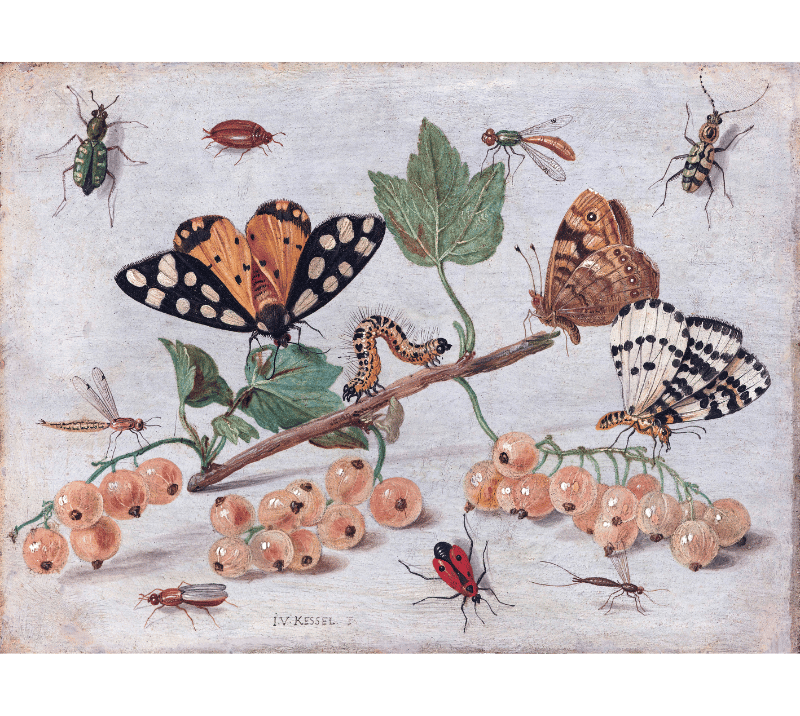Insect Biodiversity at the Crossroads: Climate Change's Stealthy Assault on Global Crop Production
Amid the ever-unfolding saga of climate change, a subtle yet immensely consequential narrative emerges, one that concerns the remarkably intricate world of insects and their relentless struggle for adaptation within an ever-transforming environment. As these minuscule wonders face a daunting ecological challenge, the implications reverberate far beyond the world of entomology and extend their disquieting shadow over the future of global crop production.
Institute of the Happy Planet
11/6/20233 min read


In the grand narrative of climate change's reverberations across our planet, one understated yet profoundly consequential subplot unfolds beneath our very feet. It concerns the diminutive heroes of our ecosystems, insects, and their increasingly strained struggle for adaptation in a rapidly transforming world. The toll this upheaval is taking on insect biodiversity holds ominous implications for the stability of our planet's ecosystems and the security of global crop production.
Recent revelations emanate from a global study led by researchers from the esteemed University College London and the venerable Natural History Museum. This study unveils an unsettling reality: a precipitous decline in pollinators, particularly insects, portends jeopardy for several tropical crops. The projected perils to crop production in 2050 stemming from the loss of insect pollinator abundance will be most pronounced in the tropical realms of sub-Saharan Africa, South America, and Southeast Asia.
The disquieting global scenario emerges with vivid clarity: nations such as China, India, Indonesia, Brazil, and the Philippines are emerging as the most susceptible to these imminent perils. Yet, what distinguishes this conundrum is the grave vulnerability of specific crops, notably cocoa, with a resounding resonance in Africa, followed by the precarious future of mangoes in India and watermelons in China.
Insects, diminutive as they may be, stand as the unsung architects of the natural world. They orchestrate the intricate ballet of pollination, catalyze the decomposition of organic matter, and occupy a central rung in the food web, sustaining countless species. Climate change, inescapably precipitated by human activity, has sent ripples across the fundamental facets of insect existence, demanding that they recalibrate their behaviors, habitats, and dietary choices in response to shifting environmental parameters. These adaptations, while awe-inspiring, unfurl a myriad of challenges, some of which imperil biodiversity.
Foremost among these challenges is the inexorable transformation of insect habitats. The rising temperatures and capricious climatic patterns coerce insects to seek refuge in higher altitudes or latitudes, away from the habitats that have nurtured them for eons. This involuntary migration threatens to destabilize local ecosystems, inducing shifts in species composition, potential resource competition, and the displacement of indigenous organisms. This unsettling domino effect further perturbs the delicate web of life that relies on these insects for sustenance.
Intriguingly, climate change disrupts the symphony of life by perturbing flowering and plant growth patterns. With warming temperatures, plants either bloom prematurely or tardily, skewing the delicate synchronization between flora and their pollinators. Species such as bees and butterflies, tethered to specific blossoms for sustenance, find themselves disoriented and alienated when these vital sources appear out of phase. Consequently, the result is a potentially reduced pollination rate, an unsettling prospect with far-reaching implications for crop yields and the vitality of wild plant populations.
Further complicating matters is the fluctuation in the quality and abundance of food resources for insects. Climate-induced alterations in temperature and precipitation conspire to alter the menu options for these vital creatures, potentially engendering food scarcities and concomitant population declines or migration in search of greener pastures.
An additional specter haunting insect biodiversity is the potential proliferation of invasive species amid climate upheaval. As insects endeavor to adapt to novel circumstances, some may inadvertently transform into invasive agents, eclipsing native species and further imperiling local biodiversity.
The resilience and adaptability of insects, forged over millennia, face an unprecedented crucible in the current whirlwind of climate change. The inexorable pace of this change is poised to stretch the limits of their adaptational capacity, rendering their plight all the more precarious.
The dwindling of insect biodiversity reverberates throughout the planetary ecosystem. These diminutive agents are the bedrock of essential ecosystem services, from pollination to decomposition and nutrient cycling. The demise of these services has the potential to destabilize food chains and imperil other wildlife, including avian and mammalian species dependent upon insects for nourishment. This ecological dissonance threatens to cascade through entire ecosystems, jolting their equilibrium and rendering them more vulnerable to instability.
In conclusion, the predicament faced by insects in adapting to a world in rapid flux is an eloquent reminder of the intricate interdependence that binds all life on Earth. As insects endeavor to navigate the treacherous terrain of shifting habitats, nutrition, and invasive competitors, the ramifications for biodiversity and ecosystem integrity cannot be overstated. To counter these perils, it is imperative that we urgently address climate change, curtail greenhouse gas emissions, and preserve the natural sanctuaries of insects. Our fate, interwoven with that of these diminutive champions, hinges upon our unwavering commitment to safeguarding the rich tapestry of biodiversity adorning our planet, all while bearing in mind the ominous specter of global crop production and food security hanging in the balance if we falter in our resolve.
(With AI Input)
Context:
A recently published study in Science Advance indicates that vital tropical crops are in jeopardy due to the loss of pollinators, attributed to the combined effects of climate change and alterations in land use.
Most Affected Regions:
Tropical regions of sub-Saharan Africa, South America, and Southeast Asia.
Countries at most risk in terms of total production:
China, India, Indonesia, Brazil, and the Philippines.
Crops at most Risk:
Cocoa is estimated to be at the highest risk, by a large margin, especially in Africa, followed by mango (particularly in India) and watermelon (in China).
Contacts
enquiry@economicnations.org
(xx) 98-11-937-xxx (On verification)
